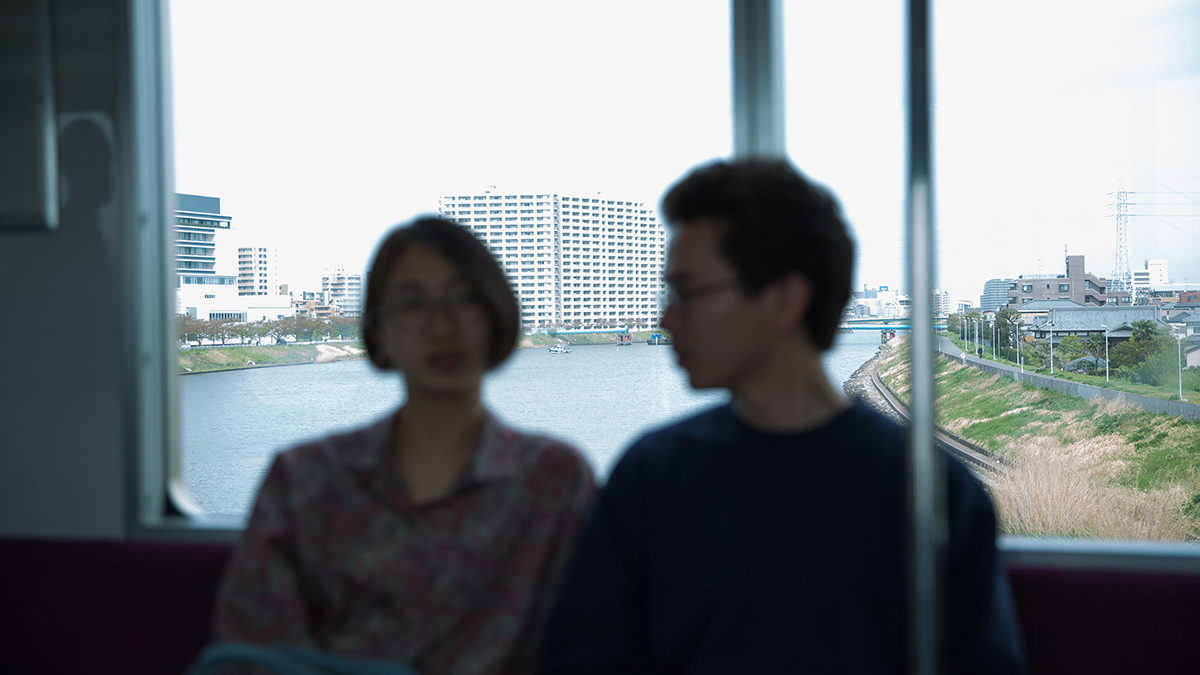The two big festivals occuring at the start of the year have come and gone. While it would have been optimal to talk about the Japanese movies featured in each before either event began, the realities of pursuing Indievisual as a side project often means being a little late to the party. Nevertheless, here is an overview of the Japanese movies of particular interest to me here at Indievisual which were presented at the 2019 IFFR and Berlinale.
International Film Festival Rotterdam
Domains

It has been 5 years since Kusano Natsuka released her award-winning Antonym. However, she is back with an even more intriguing movie that, while touching upon themes of friendship similar to Antonym, boldly upturns the conventions of structure and storycraft, marking Kusano as an inventive filmmaker who embodies the indie spirit. Click here for more information.
The Garden Apartment
In my thoughts regarding this movie after viewing it at OAFF 2018, I indicated the work as a whole, while visually competent (Ishihara Umi is a photographer and artist), seemed like a work-in-progress. The narrative shortfalls on view often plague visual creators who have little experience in cinematic storytelling. Whether those shortfalls have been corrected remains to be seen, but Ishihara’s visual style might be more suited to short form storytelling than feature length (see below). Click here for details.
The Pioneer

At 27 minutes, Ishihara’s “glamorous dystopian sci-fi” tells a story set in an alternative Japan prior to the 2020 Olympics–a set up perhaps more suited to her artistic sensibilities. The stills and trailer certainly lend credence to such supposition. Details here
Memento Stella
Makino Takashi’s Bright Future entry appears to be a mid-length sound & visual experience and, by intention, an experience completed by each and every audience member’s own base of reference. Like Koyaanisqatsi but without concrete imagery, what the viewer takes away from the movie depends on what they bring inside of them to the theater. Click here for more information.
On the Border
A dialogue-less experimental piece making a simple statement with its simple imagery. Details here
Asako I & II
Much has been said about Hamaguchi Ryusuke’s unique love story. Those appraisals can be found around the internet. Suffice it to say, Hamaguchi, the director of Happy Hour and Intimacies, is sure not to allow the movie’s fascinating concept to play out simply. Find out more here
Killing
After Fires on the Plain, Tsukamoto Shinya takes on his first ever period film, but as always, through his distinct sensibility. And like his previous work, he steers the chambara genre to a new direction as it throws into relief the state of contemporary violence. Click here for details.
The Monster and the Woman

There is a monster terrorizing a village. The authorities seem ineffective to do anything. What does the titular woman intend to do about the monster? Ikeda Akira’s short seems poised to deal with prevalent social themes. Find out more here
Vulnerable Histories (A Road Movie)

It may be difficult to categorize Tanaka Koki’s movie as fiction or documentary. The concept and execution seem to blur the lines between the two. However, unlike other Japanese entries at IFFR 2019 which also deal with Japan’s social issues, Tanaka makes no clever analogies, choosing instead to tackle the issue of an increasingly polarizing society directly through conversations between two people positioned by-and-large on the periphery of the “homogenous society.” Click here for more information
The Better Way Back to the Soil
Hirakawa Yoki assembles the titles of movies lost to time and presents them against a black background to form this 8 minute prose, equal parts cinematic and literary. Details here
Berlin International Film Festival
37 Seconds

Director HIKARI’s empowering tale of a wheelchair bound manga artist finding a new sense of liberation is the kind of movie not often made or seen in Japan. Then again, HIKARI has spent quite some time abroad which could explain this atypical and endearing look at a young woman’s journey of self-discovery. Not only was this world premiered at Berlin, but it also took home the Panorama Section’s Audience Award as well as the C.I.C.A.E Art Cinema Award. Find out more here
Complicity
Chikaura Kei’s debut feature-length adds to the collective of titles dealing with the seemingly unofficial issue of migrants, foreigners, and immigration at festivals recently. Though not political in any regard, the China-Japan production is Chikaura’s contribution to discussions as told through the tale of a foreigner illegally in Japan connecting on a human level with the proprieter of a soba shop. It is perhaps a reminder those macrosm issues are first solved at the microcosm level. Read more here
We Are Little Zombies

Four 13-year-olds who just lost their parents but can’t seem to feel anything decide to form a band in order to regain some semblance of emotion. Nagahisa Makoto follows up his unique And So We Put Goldfish in the Pool with this debut feature-length bursting with hyperbolic pop style yet grounded in genuine explorations of grief and loss. Sundance awarded the movie its Special Jury Award for Originality, which in a festival founded on independence and originality, is quite an achievement. More details here
Leaking Life
An animated short created through painted illustrations, Hayashi Shunsaku, who has won awards for his previous short movies including at Slamdance, plays with movement and textures over its 15 minute runtime. It seems as mesmerizing as it is delightful to watch. Find out more here
A Tiny Place That is Hard to Touch

Reading the synopsis for Shelly Silver’s movie at first paints it as the “culture clash” narrative one might expect from an American director filming a story in Japan. However, something happens either toward the middle or the final third in which the story, according to Berlinale programmers, “is hijacked into science fiction territory.” In this regard, there seems to be something more to Silver’s movie which certainly entices curiosity. Read more here
